Cambridge Bible for Schools and Colleges (58 vols.)
Digital Logos Edition
Overview
The Cambridge Bible for Schools and Colleges was the first ever complete commentary set to be published by Cambridge University Press. The more than thirty theologians and biblical scholars that contributed to this collection have illuminated the Scriptures for thousands of readers for nearly one hundred years, and continue to provide a fantastic, holistic look at the entirety of the Bible, including 1 Maccabees, Ecclesiasticus, and The Wisdom of Solomon. Contributing authors include noted scholars Herbert Edward Ryle, S. R. Driver, J. Skinner, A. Plummer, F. W. Farrar, H. C. G. Moule, and W. H. Simcox. The original audience for this series was the English Bible student, and the commentaries continue to be an excellent resource for those in the scholastic arena. In addition, the accessible writing style makes the fifty-seven volumes included a great scriptural study guide for pastors and laity.
The history, original language studies, outlines, maps, literary analysis, and verse-by-verse commentary for each book of the Bible contained in The Cambridge Bible for Schools and Colleges provide a comprehensive backdrop to the understanding of the Scriptures. With nearly 15,000 pages, these books are easily searchable in digital format, and the commentaries will appear in Passage Guide results. What's more, in the Logos edition you can link the commentaries with your preferred Bible for ease of scrolling and searching. Hebrew and Greek word studies can be performed with the click of a mouse, and Scripture references can be accessed instantaneously with a mouse-over.

- Fifty-seven volumes of commentary covering the entire Bible
- Biblical wisdom and insight from dozens of well-known theologians and biblical scholars
- Contains helpful maps, indexes, appendixes, and outlines for each book of the Bible
- Over 14,000 pages of verse-by-verse exegesis
There are no better books in exposition of the different parts of Scripture than those contained in the Cambridge Bible for Schools and Colleges. The series has long since established its claim to an honorable place in the front rank of first-rate commentaries; and the teacher or preacher who masters its volumes will be, like Apollos, mighty in the Scriptures.
—Church Sunday School Magazine
- Title: The Cambridge Bible for Schools and Colleges
- Publisher: Cambridge University Press
- Volumes: 57
- Pages: 14,549
This title is included in the following collections
You can save when you purchase this product as part of a collection.
Logos 9 Diamond Legacy Library
$2,999.99$2,999.99Complete Classic Commentary Co...
$17,553.16$3,699.99Logos 6 Portfolio Legacy Libra...
$4,749.99$4,749.99Logos 9 Portfolio Legacy Libra...
$4,749.99$4,749.99
- $11,399.99
- $11,399.99
- $11,399.99
- $11,399.99
- $21,749.99
- $24,999.99
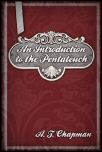
Providing historical accounts of the origins of the Hexateuch and the Pentateuch, this volume includes a critical look at the literary styles contained within these biblical books, as well as a close-up look at Old Testament Jewish law. An Introduction to the Pentateuch gives a comprehensive overview and guide to the study of the Pentateuch.
A. T. Chapman was a professor at Emmanuel College, Cambridge.
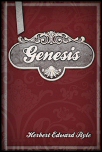
Verse-by-verse commentary is accompanied by images, tables, appendixes, and a lengthy introductory section in Herbert Edward Ryle's study of Genesis. Ryle's writings are lucid and detailed, extensively studying the original Hebrew text and offering over 500 pages of rich biblical insight into the first book of the Pentateuch.
Herbert Edward Ryle was Dean of Westminster, Bishop of Exeter and Winchester, and Fellow of the British Academy.
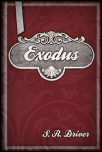
This commentary is introduced by seventy-two pages of background information, including the literary structure of the book of Exodus, the customs and traditions of the Hebrews, a chart of the ten plagues, and a brief history of Egypt. Driver then delves into a verse-by-verse study of this second book of the Pentateuch.
S. R. Driver (1846-1914), born in England, was a Hebrew scholar and professor, as well as a writer of numerous theological resources including commentaries on Genesis, Leviticus, Jeremiah, and Job.
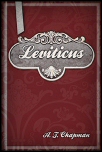
The subject matter of Leviticus—sacrifices, offerings, and lists of laws—can be difficult to understand, but A. T. Chapman's commentary provides a solid foundation for the comprehension of this Old Testament book. Dissecting everything from the meaning of the word "leviticus," to the sacrifices and rules contained, the author also provides verse-by-verse commentary to help illuminate biblical truth.
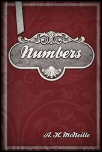
Analyzing the biblical text of Numbers, A. H. McNeille includes extensive notes, picking apart the historic and theological details of this fourth book in the Pentateuch. This commentary is infused with scriptural cross-references, showing the cohesiveness of the Old Testament and the Bible as a whole.
A. H. McNeille was Fellow and Dean of Sidney Sussex College, Cambridge.
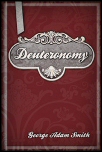
Deuteronomy contains thirty-four chapters of history and Jewish law. Ending with the death of Moses, this significant fifth book of the Bible also concludes the Pentateuch. George Adam Smith's focused exegesis gives historical context to the rituals and laws discussed in Deuteronomy, with meticulous elucidation.
George Adam Smith was Principle and Vice-Chancellor at the University of Aberdeen, as well as a Fellow of the British Academy.
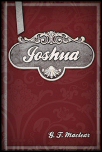
"It is impossible to disconnect the life and character of Joshua from the work, which the Divine Command called upon him to accomplish," begins Maclear in this concise exegesis on the book of Joshua. Complete with detailed historical facts, original language word studies, and astute biblical interpretation, Joshua is a fantastic resource for Old Testament studies.
George Frederick Maclear, a prolific author and noted theologian, was the Head Master of King’s College, London for fourteen years.
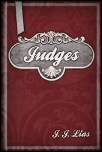
J. J. Lias (1834–1923) was Chancellor of Llandaff Cathedral and a Hulsean Lecturer in Divinity and Lady Margaret Preacher at the University of Cambridge.
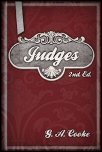
Judges, 2nd ed. provides another in-depth look at this Old Testament book. G. A. Cooke's scriptural insights come from his years of Old Testament and Hebrew language studies, and provide a comprehensive commentary on the book of Judges.
G. A. Cooke was Regius Professor of Hebrew and Canon of Christ Church, Oxford. Held Hon. D.D., Edinburgh and Hon. Canon of St. Mary’s Cathedral, Edinburgh.
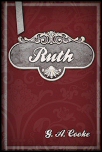
"The ancient narratives of the book of Judges carry us back to a half-barbarous age of struggle and disorder, memorable chiefly for the deeds of Israel's heroes; the book of Ruth, although the scene is laid in the same age, gives us a very different picture," states Cooke. An incredibly brief but informative twenty-two pages make up this commentary on Ruth, where the author contrasts the scene of Ruth to that of Judges—Ruth gives a picture of a family and village life, rather than the larger scope Judges provides of the whole nation of Israel.
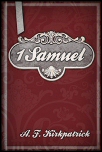
Kirkpatrick begins this volume with a detailed outline of 1 Samuel, followed by a discussion of the chronology of the book. In addition, he introduces the characters of Saul and David, before launching into verse-by-verse commentary. This comprehensive look at 1 Samuel provides historical context and a great overview to understanding the Old Testament.
A. F. Kirkpatrick was a fellow of Trinity College, and Regius Professor of Hebrew at the University of Cambridge.
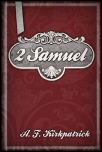
1 Chronicles tells of the reign of David, as does 2 Samuel. Kirkpatrick takes the time to explore the relationship between the two Old Testament books, comparing what each says about King David. Drawing on 1 Samuel quite a bit as well, this commentary is rich with scriptural cross-references. Wrapping up the study of 1&2 Samuel, Kirkpatrick analyzes the authorship of the two books, the literary style, and the contextual setting of this book within the Old Testament.
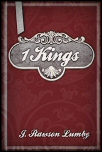
Using the Cambridge Paragraph Bible, J. R. Lumby travels through the first book of Kings after introducing the author, canonicity, and a discussion of the Hebrew text. From David's later years and death to the reign of Jehoshaphat, the lineage of Israel's first Kings is outlined in this commentary.
J. R. Lumby was ordained in 1860 and became Norrisian Professor of Divinity at the University of Cambridge in 1879.
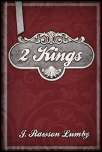
Beginning this volume is a chronological table of the kings of Judah and Israel. Drawing from other Old Testament references, Lumby's commentary of Kings continues in this second volume with a wealth of historical background and cultural facts. His elucidations are concise, providing a solid commentary for 2 Kings in just under 300 pages.
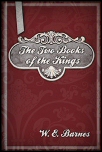
The Old Testament's 1 & 2 Kings were originally one book. In the introduction to The Two Books of the Kings, Barnes elaborates on the history of the name of these two books of the Bible, as well as how they ended up being split into two books, rather than the one book they originally were. Traveling through the two books in outline form, the author then breaks 1 & 2 Kings into verse-by-verse segments, providing analytical notes for the text.
W. E. Barnes was Fellow and Chaplain of Peterhouse, Hulsean Professor of Divinity, and Examining Chaplain to the Bishop of London.
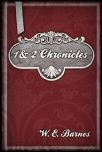
1&2 Chronicles contains maps of the Holy Land and Jerusalem, as well as an extensive introduction that includes the relationship of 1 & 2 Chronicles to 1 & 2 Samuel and 1 & 2 Kings. Barnes' commentary is a concise and thorough look at these Old Testament books and the historical context within which they are placed.
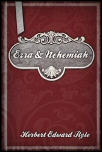
Ezra and Nehemiah contain a combined twenty-three chapters of prophecy, chronology, and history. Ryle's interpretation of these two books pulls Greek word studies from the LXX, and is infused with scriptural cross-references. His years of theological study and great biblical insight provide an astute exegesis of Ezra and Nehemiah.
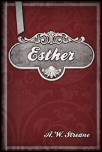
Discussing the date, authorship, canonicity, chronology, and the original Hebrew text, Streane then provides a compelling verse-by-verse exegesis of Esther. Ending this resource are notes on The Feast of Purim, Haggada, and specimens of the first and second Targums on Esther.
Annesley William Streane was a Fellow of Corpus Christi College, Cambridge.
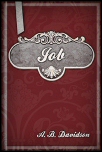
A. B. Davidson breaks the book of Job into five parts: prologue, the debate between Job and his friends, the speeches of Elihu, the speeches of the Lord, and the epilogue. Diving into topics such as the integrity and nature of the book, and the age and authorship of Job, Davidson unpacks the theology and the practical application of this well-known book of the Bible.
A. B. Davidson was a preacher, theologian, and biblical scholar.
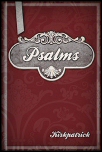
Well-loved theologian A. F. Kirkpatrick brings us a thorough verse-by-verse commentary spanning well over 800 pages. Introducing his commentary with over 100 pages of background, Kirkpatrick delves into the form of Hebrew poetry, the theology of the Psalms, the history of the Psalter in the Christian Church, and much more. Each Psalm begins with a brief background to provide historical context.
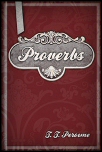
Perowne's Proverbs covers the moral and religious teaching of this biblical book, as well as the literary character and the wisdom of the Hebrews. Providing detailed notes on the Proverbs, Perowne succinctly analyzes the wisdom in these Scriptures.
T. T. Perowne was Archdeacon of Norwich, and the Late Fellow of Corpus Christi College, Cambridge.
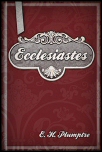
This volume starts with the background and definition of the title of the Old Testament book, Ecclesiastes. From there, notes on the authorship and date of this biblical literature, outlines, and analysis make up an extensive introduction. Plumptre makes his way through Ecclesiastes verse-by-verse, ending with a trio of appendixes discussing Shakespeare, Koheleth, and Tennyson, and their relationships to the Old Testament.
E. H. Plumptre was the Dean of Wells, as well as a theologian, biblical scholar, and author.
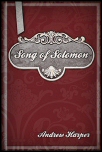
Is Song of Solomon a drama? Is it a literal interpretation? A poem? Perhaps an allegory? Andrew Harper discusses these questions in an introduction and appendix, sandwiching verse-by-verse commentary between. Although just over 100 pages, his work is a fantastic guide to the interpretation of a much-debated Old Testament book.
Andrew Harper was the Principal of St. Andrew's College within the University of Sydney, and Professor of Hebrew.
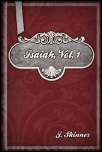
Isaiah, Vol. 1 covers chapters 1–49 of this Old Testament prophetic book. J. Skinner introduces Isaiah's character, prophetic conceptions, and an analysis of Israel and Assyria during the time the book was written. This lucid and comprehensive commentary is highly accessible to all.
J. Skinner studied in Scotland and Germany at the end of the 19th century. He held pulpits in the Free Church of Scotland from 1880 until 1890, when he was elected to the faculty of what is now Westminster College, Cambridge. There he became one of the earliest English-language scholars to incorporate the documentary hypothesis in his teaching and writing. His lectures were described as clear, illuminating, and impressive. Skinner was elected Principal (i.e., Dean) in 1908, and given Principal Emeritus status in 1922. His 1910 Genesis was for many years the standard English-language text. He died in 1925 while revising it.
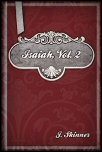
Covering the remaining chapters of Isaiah, volume two of Skinner's commentary continues with verse by verse commentary, which is preceded by sections on the contents of the prophecy, historical background, the prophet's theological conceptions, date and authorship of the prophecy, and unity of the prophecy.
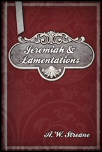
Streane groups together Jeremiah and Lamentations in this two-part commentary. First, focusing on the fifty-two chapters that encompass Jeremiah, he delves into the contents, arrangement of the book, a comparison of Jeremiah and the other Old Testament prophets, and the use of meter by Jeremiah. The short five chapters that make up Lamentations are covered in the second part of Streane's commentary, as well as background history and authorship.
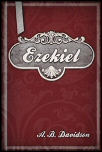
"The book of Ezekiel is occupied with two great themes: the destruction of the city and nation; and the reconstitution of the people and their eternal peace," states Davidson. Elaborating on each theme and discussing how the themes fit together, he also discusses the history of Ezekiel and analyzes the book as a prophetic work. Verse-by-verse commentary follows the detailed introduction.
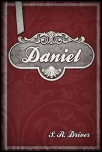
A great amount of information is packed into this commentary on Daniel: history, authorship and date, a study on the person of Daniel, a comparison of Bible versions and commentaries, and extensive notes on various terms found in the book of Daniel. As Driver travels through Daniel, he explains the historical context of the book and provides Hebrew word studies at parts, also analyzing the prophecy included.
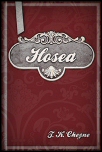
Was Hosea's domestic history a parable or fact? Theologian T. K. Cheyne explores this question in Hosea, exploring the style in which the book was written and five leading ideas of interpreting the prophecy contained in this Old Testament book. His commentary provides a detailed look at the characters contained in the book of Hosea.
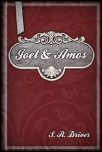
Although they are two of the smallest Old Testament books, Joel and Amos are full of prophecy, history, and practical application for today. S. R. Driver's exegesis on both of these books pulls from his years of biblical studies. Comprehensive and meticulous, the commentary shows how Joel and Amos interact with each other, as well as how they fit into the Old Testament and Bible as a whole.
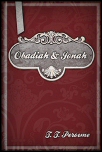
Prophecy, obedience, judgment—these three subjects are covered in the books of Obadiah and Jonah. Perowne provides astute exegesis and biblical insight, as well as historical context to these two Old Testament prophetic books.
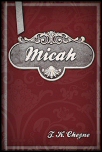
Micah, arguably the youngest of the Old Testament prophets, prophesied about Samaria and Jerusalem. In just eighty-eight pages, T. K. Cheyne provides compelling verse-by-verse exegesis for this book, framed by historical context and scriptural cross-references.

Nahum, Habakkuk, and Zephaniah are covered in three consecutive sections in this commentary by A. B. Davidson. The verse-by-verse commentary for each is preceded by an introduction detailing information regarding the prophet himself, the prophecy contained, and the integrity of the prophecy. An appendix and index complete this three-part commentary.
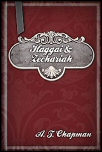
T. T. Perowne begins his commentary with the book of Haggai. Discussing everything from the literary style in which each book was written, to the prophecy contained in the books, to the prophets themselves, he offers in his usual well-loved style a compelling discussion of these Old Testament books.
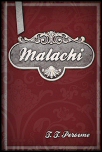
The book of Malachi has been suggested by some to be best titled "Malachiah," meaning "The Messenger of Jehovah." Discussing the origins and history of the name, author, and date of the book, Perowne also provides verse-by-verse commentary with extensive notes on the four chapters which make up the last book of the Old Testament.
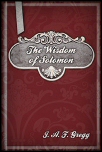
Divine Wisdom; Wisdom of Solomon; Wisdom; Solomon; The Book of the Great Wisdom of Solomon, Son of David; The Book of the Wisdom of Solomon, Son of King David, Who Ruled Over the Children of Israel—these six titles are a sampling of names this biblical book has been called. Discussing everything from the name and authorship of this Old Testament book to the debate over the ordering in which it appears in the Old Testament, J. A. F. Gregg thoroughly dissects the Wisdom of Solomon.
J. A. F. Gregg was archbishop of Dublin.
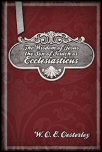
This illuminating commentary on the biblical book sometimes referred to as Ecclesiasticus provides a thorough look at the history, name, and authorship. Infused with scriptural cross-references and references to other commentaries on Ecclesiasticus, Oesterley's work provides a holistic approach to the study of this Old Testament book.
W. O. E. Oesterley (1866–1950) was educated at Brighton College, Jesus College, and West Theological College. Oesterley went on to become Professor of Hebrew and Old Testament Studies at King's College, London. He is the author of many titles including: The Wisdom of Jesus the Son of Sirach or Ecclesiasticus, The Epistle to Philemon, and The Doctrine of the Last Things: Jewish and Christian.
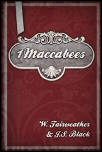
This volume covers 1 Maccabees, a part of the Apocrypha, and includes timelines, a more than fifty page introduction, and verse-by-verse commentary.
W. Fairweather and J.S. Black were nineteenth century theologians, biblical scholars, and authors.
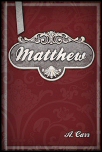
Carr begins this volume with a detailed account of St. Matthew's life, as well as a brief history of the time of Jesus Christ. Then, Carr provides verse-by-verse exegesis. Maps of the Holy Land and the Sea of Galilee follow the commentary and provide an excellent visual aid to the study of this first New Testament gospel.
C. A. Carr was a Fellow of Oriel College, Oxford and Assistant Master at Wellington College.
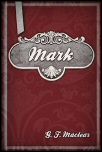
This volume contains over two hundred pages of critical commentary on Mark, as well as an overview of St. Mark's life and an analysis of the second New Testament gospel. Interspersed with maps, the resource ends with an index entitled "Index of Words and Phrases Explained."
G. F. Maclear, a prolific author and noted theologian, was the Head Master of King’s College, London for fourteen years.
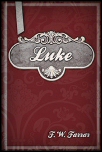
Delving into the life of Jesus as seen through the eyes of a first-century physician, Farrar's work on Luke provides a historically rich and highly engaging study guide. Infused with maps, this resource also contains a close-up look at the Herods at the time of Christ.
F. W. Farrar (1831–1903) was educated at King’s College in London and Trinity College, Cambridge. The Archdeacon of Westminster and then Dean of Canterbury, Farrar was a prolific author and powerful preacher. His book, History of Interpretation, is also available from Logos.
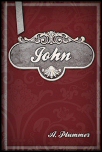
In this volume, distinguished theologian A. Plummer divides the gospel of John into two parts: from his birth to the departure from Jerusalem after the Ascension, and the departure from Jerusalem to his death. Providing a look at the characteristics of this gospel, Plummer also discusses the relation of John to the Synoptic Gospels. His fascinating and detailed commentary travels through the gospel of John, chapter-by-chapter.
Alfred Plummer (1841–1926) was educated at Exeter College, Oxford and was a Fellow of Trinity College. He is notably one of the editors of the International Critical Commentary series which contain his commentaries on Luke, 1 Corinthians, and 2 Corinthians. Plummer was also a contributor to The Expositor's Bible Commentary set.
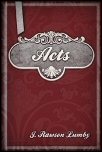
An extensive introduction about the author, date and source of the book of Acts, and analysis of the writing style begins Acts. Nearly 400 pages of verse-by-verse commentary on the text follows, as well as a helpful visual aid—maps of Paul's missionary journeys.
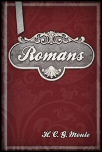
After sketching the life of one of the New Testament's most zealous missionaries—the Apostle Paul—Moule then discusses the date, authenticity, language of the letter, as well as questions regarding the last few chapters of Romans. Moule lays out the theology of Romans in clear, comprehensive notes, ending with an index to the introduction, notes, and appendices.
H. C. G. Moule (1841–1920) was the son of the vicar of Fordington, Dorchester, and was educated at home prior to attending university at Cambridge. He was ordained in 1867 and was curate at Fordington before being appointed as dean of Trinity College, Cambridge, 1873 to 1876. During his tenure at Cambridge he became first principal of Ridley Hall Theological College, in 1881, and Norrisian Professor of Divinity in 1899. In 1901, he succeeded B.F. Westcott as Bishop of Durham.
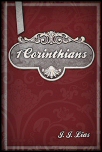
Paul's two extensive letters to the Church of Corinth make up a total of twenty-nine chapters. J. J. Lias' distinguished commentary on 1 Corinthians provides a wealth of biblical insight, as he dives into the history of Corinth, the background of this Pauline epistle, the doctrine of the resurrection, and verse-by-verse commentary.
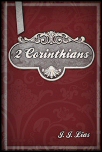
J. J. Lias treats 2 Corinthians with the same meticulous detail as 1 Corinthians, analyzing the writing, date, and theology of the epistle. This volume also contains an essay on the thorn in Paul's flesh and notes on the English version of the New Testament.
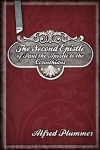
2 Corinthians
- Author: Alfred Plummer
- Publisher: Cambridge University Press
- Publication Date: 1903
- Pages: 156
Before moving into a verse-by-verse commentary on 2 Corinthians, Plummer explores the hypothesis that this was indeed two "mutilated letters being welded together."
Alfred Plummer (1841–1926) was educated at Exeter College, Oxford and was a Fellow of Trinity College. He is notably one of the editors of the International Critical Commentary series which contain his commentaries on Luke, 1 Corinthians, and 2 Corinthians. Plummer was also a contributor to The Expositor's Bible Commentary set.
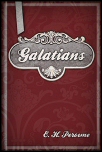
Although written over a century ago, distinguished theologian E. H. Perowne's study of Galatians is full of practical application for today, as he unpacks the short but dense six chapters that make up this epistle. The commentary is framed with the historical context in which Galatians was written, and includes a discussion of Galatia, its Church, and Paul's journeys there.
E. H. Perowne, master of Corpus Christi College, Cambridge, was also the Prebendary of St. Asaph.
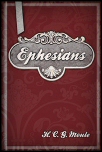
H. C. G. Moule's commentary on Ephesians provides a unique look at this letter from Paul to the Church at Ephesus. Noting parallels between Ephesians and Colossians, this volume also discusses the authenticity of this epistle and the historical background of the Ephesians. The commentary contained in this resource elucidates the truths contained in Ephesians, in concise yet astute exegesis.
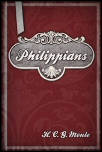
This focused commentary opens with a geographic description of the location of Philippi, then launching into an introductory description of the date, occasion, and authenticity of the epistle. Verse-by-verse commentary follows, in a meticulous scrutiny of the book of Philippians.
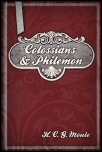
This volume is divided into two distinct sections, covering first Colossians and then Philemon. Before the verse-by-verse commentary on each epistle, facts and background information are laid out in a detailed manner. Included is an essay entitled "Slavery, and the Attitude of Christianity Towards It."
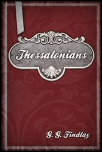
Thessalonica, which is now referred to as Saloniki, Turkey, is one of the few cities that Paul has visited which has remained a significant city for 2,000 years. Findlay's commentary first delves into the history of the city of Thessalonica, then follows Paul's writing through 1 & 2 Thessalonians, offering detailed notes and historical context.
G. G. Findlay (1849–1919) was Professor of Biblical Languages at Wesleyan College, Headingley.
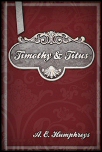
This volume discusses the authenticity and authorship of 1 & 2 Timothy and Titus, detailing debates over those issues. The Pastoral Epistles, as 1 & 2 Timothy and Titus are often called, have a distinct literary style that Humphreys discusses before transitioning into detailed commentary on the biblical text.
A. E. Humphreys was rector of Fakenham, Norfolk, as well as Late Fellow and Assistant Tutor of Trinity College, Cambridge.
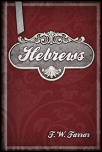
"Who? What? Where? With what helps? Why? How? When?" Seeking to answer each of those questions in regard to the book of Hebrews, F. W. Farrar opens Hebrews with fifty pages of introduction, then travels through this theologically-rich New Testament book verse-by-verse, offering profound biblical insight and knowledge.
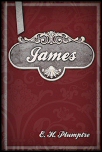
A concise book that is packed with practical application, the New Testament book of James is discussed in-depth by E. H. Plumptre. From the author of the epistle, to the date it was written, to the analysis of the book as a whole, Plumptre brings his readers a critical look at James. This engaging commentary expands on the doctrines found within this small epistle, and is infused with scriptural cross-references.
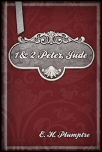
1 & 2 Peter, Jude covers three of Paul's shortest epistles, preceding the commentary with a discussion entitled "The Training of the Disciple." Giving extensive background information for each of the three epistles, the volume thoroughly dissects each letter.
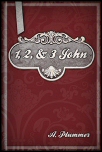
1, 2, & 3 John contains a set of five appendices, entitled: "The Three Evil Tendencies in the World," "Antichrist," "The Sect of the Cainites," "The Three Heavenly Witnesses," and "John the Presbyter or the Elder." Also included is an analysis of the last years of John, as well as outlines of 1, 2, & 3 John and verse-by-verse commentary for the biblical text.
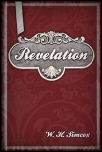
The images and events described in Revelation have spurred many different interpretations of the last book of the New Testament. Simcox's years of study of the book of Revelation equipped him to write this elucidation of this much-debated biblical book. Rich with scriptural cross-references and historical fact, this commentary provides a lens through which to study the eschatology contained in Revelation.
W. H. Simcox (1842–1889) was a Fellow of Queen’s College, Oxford and Rector of Harlaxton. Simcox was active in the study of the book of Revelation, early Christian history, textual criticism, and Greek grammar.
Reviews
13 ratings
Meshaal
2/25/2017

Kevin W. Woodruff
1/27/2017
This set does not seem to include the second edition of Chronicles by Elmslie
Chan Yew Ming
10/8/2016
CHL
12/13/2014

Gabe Hatch
12/31/2013

Larry Proffitt (I
11/19/2013

Gregory S. MacBeth
8/8/2013

RevSarge
8/5/2013

DMB
8/2/2013